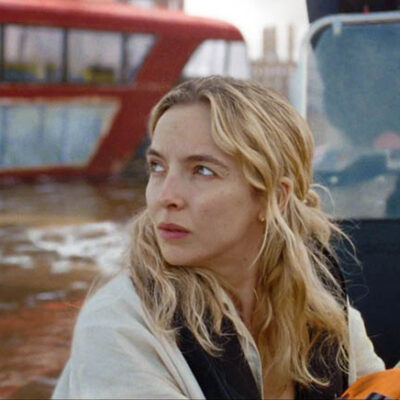A dramatic moment occurs when Cecilia throws a can of white paint down a ladder leading into an attic to reveal the rough outline of her invisible assailant. “We did one take of that shot,” reveals Dearing. “It was mostly practical. I asked if we could have a green or blue suit that matched the black practical suit. We couldn’t afford to do the whole suit. It was complicated to build that black suit. What we did was commit to the hood, chest and half of the arms of a green version of the same black suit. The stunt guy was up on the ladder and a can of paint was thrown at him. I got a clean pass, took a picture of the contours of the suit and put it over the rest of his arms. I had enough in camera to be able to patch him and make it all look seamless. In 2D, I extended behind him the paint that was naturally dripping. It was a locked camera held dramatically. Originally, it was going to be a motion-controlled shot because we wanted the camera to go from the black down the hole into the light and follow the paint but we couldn’t get the rig up into that space. There was a lot of cleanup and compositing work in post-production to pull that off.
“I always thought when we reveal the suit was going to be the thing that everybody would be focusing on,” notes Dearing. “It ended up being a CG character who is the main protagonist in the film. We had a short time frame and schedule, and didn’t have a big budget and team. If it looked cheesy in any way, shape or form that would pull the audience out of the film, that could be with the animation performance, the design, and how well it was rendered, composited and integrated in every shot. It had to be 100% photoreal and believable. It had to look like a guy in a suit and whatever he was doing he was actually doing. I didn’t want anyone going, ‘That’s a cheesy looking suit.’ Or, ‘The animation looks crap. I don’t believe it.’ We haven’t heard any of that. I think we pulled it off.”









 A guard at a mental institute discovers that Cecilia Kass (Elisabeth Moss) is not delusional.
A guard at a mental institute discovers that Cecilia Kass (Elisabeth Moss) is not delusional.








